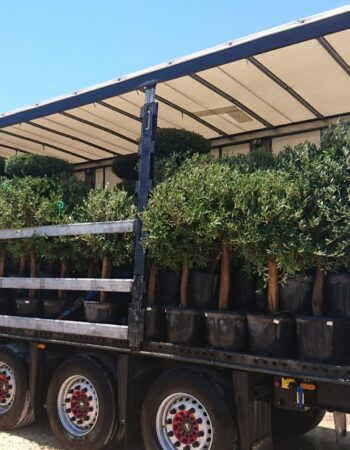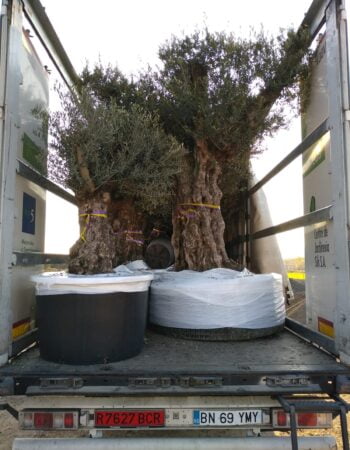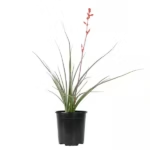JACARANDA MIMOSIFOLIA
Jacaranda mimosifolia, also known as Blue Jacaranda, is a fast-growing ornamental tree admired for its stunning lavender-blue flower clusters and delicate fern-like foliage. Perfect for warm climates, it offers vibrant seasonal color and light, airy shade, making it a standout in gardens, parks, and urban landscapes.
Botanical Name: Jacaranda mimosifolia
Common Names: Jacaranda Tree, Blue Jacaranda
Mature Size: 25–50 feet (8–15 meters) in height, 15–30 feet (5–9 meters) in spread
Light Requirements: Full sun
Soil Requirements: Well-drained, moderately fertile soils; tolerates sandy and loamy substrates
Water Needs: Moderate; drought-tolerant once established
Foliage: Delicate, fern-like, bright green leaves that provide a soft, airy canopy
Flowers: Large clusters of tubular lavender-blue flowers blooming in spring and early summer
Growth Rate: Fast when young, moderate with maturity
Uses:
Ornamental Tree: Jacaranda mimosifolia is cherished worldwide for its stunning violet blooms and elegant foliage, making it a show-stopping centerpiece in urban streetscapes, gardens, and parks.
Shade Tree: Its broad canopy offers excellent shade in warm climates, contributing to cooling and comfort in outdoor spaces.
Urban Landscaping: Commonly planted along avenues and boulevards, it adds vibrant seasonal color and architectural beauty to city environments.
Benefits:
Spectacular Flowering: Few trees rival the jacaranda’s dramatic spring bloom, which carpets the ground in a striking display of purple petals.
Attracts Pollinators: Its blossoms are a valuable nectar source for bees and butterflies.
Drought Tolerance: Once established, it handles dry periods well, making it suitable for Mediterranean and subtropical climates.
Aesthetic and Cultural Value: Widely celebrated in art and culture, it enhances the visual identity of any garden or streetscape.
Deciduous Grace: Even when not in bloom, its finely textured foliage provides beauty and movement.
Jacaranda mimosifolia is an iconic ornamental tree that brings vibrant color, lush texture, and environmental value to any warm-climate landscape. Its long flowering season and graceful silhouette make it an enduring favorite in both private gardens and public spaces.
Debes acceder para publicar una valoración.


CAREFUL TREE TRANSPORTATION
At Treezom, we take great care in transporting your trees to ensure they arrive in perfect condition. Our expert team uses various methods, depending on the size and volume of the order, to provide safe and efficient delivery. Whether you're ordering a single tree or a bulk order, we guarantee high standards of handling and care throughout the process.
MULTIPLE SHIPPING METHODS
- Truck Delivery: Ideal for local or regional deliveries, ensuring a smooth and timely shipment of your trees directly to your location.
- Sea Containers (20’ or 40’): Perfect for larger orders or international shipping. Our sea containers are equipped to handle bulk shipments with optimal protection.
- Other Customized Solutions: Depending on the size and nature of your order, we can offer tailored shipping methods to meet your specific needs.
No matter the shipping method, we use specialized packaging and handling procedures to protect the trees during transit, ensuring they arrive healthy and ready for planting.











 Single Tree
Single Tree
Valoraciones
No hay valoraciones aún.